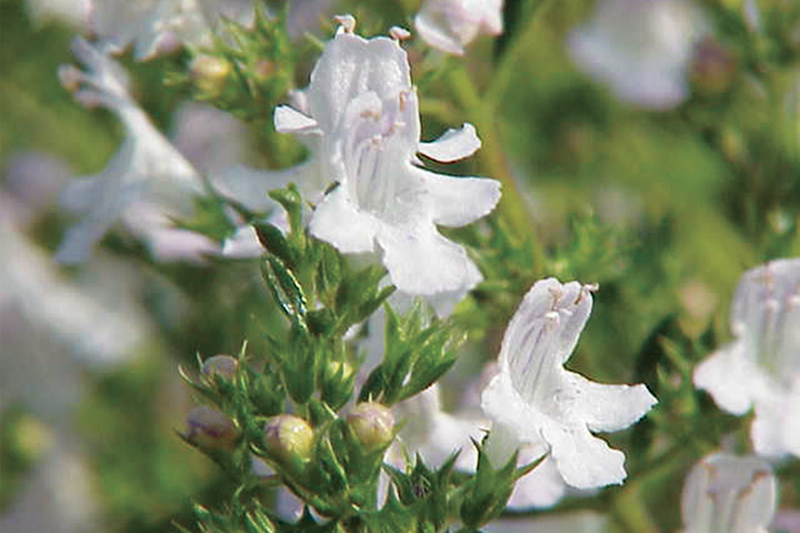Opposites attract, even in the kitchen. We have sweet and savory dishes. Sweet food tastes like sugar or honey, while savory dishes are stronger flavored or spicy.
So the savory flavor of meats is often mixed with the sweet flavor of sugar or fruits. Think lamb with mint jelly, or ham and pineapple. Asian dishes often have sweet and sour sauces. It is also why we add salt and pepper to sweet corn.
So the kings of savory herbs are the aptly named Summer Savory and Winter Savory. Summer savory (Satureja hortensis) is an annual grown from seed, and Winter Savory (Satureja montana) is a woody perennial.
With the approach of winter, what could be better than to grow your own Winter Savory? This is an ancient herb, grown for over 2,000 years. Pliny called the genus “Satureja,” from the word "satyr," the half-goat and half-man beast that delighted in all things decadent.
Winter Savory is a hardy perennial with tiny white flowers that bloom in late summer. It tastes similar to thyme, but is stronger flavored with larger leaves. Use the leaves to add a bold, spicy flavor to beans, mushrooms, stuffings, and roasts, and to season meat, fish or vegetables. Use the leaves in potpourris, to flavor vinegars, or to mix into herb butters. Tea made from the leaves is said to ease sore throats and flu. Traditional medicine uses Winter Savory to treat digestive problems and nausea. Winter Savory ointment relieves arthritic pain. Its strong aroma repels pests such as mosquitoes, yet attracts beneficial insects such as bees and other pollinators.
Winter Savory grows best in full sun, in poor soil that drains well. It grows six to 12 inches tall with a spread of eight to 12 inches across. It does best with at least six hours of full sun each day. Ideal soil pH is 6.7. If you plant Winter Savory in the garden, space the plants about a foot apart. In temperate areas outdoors, Winter Savory goes dormant during winter, shedding its leaves and looking quite dead. In spring, these bare stems burst into life with fresh leaves. As a low, shrubby herb, it makes an attractive edging plant. Plant Winter Savory near beans to discourage bean weevils. When grown next to roses, it keeps aphids away.
You can grow Winter Savory indoors in pots. Choose a wide pot at least six inches deep. This is one houseplant that does well with infrequent watering - once a week when it is growing strong in the spring, but maybe once every two weeks indoors. Propagate Winter Savory with cuttings. Stems will often root in a vase of water, or you can use new shoots potted in wet sand. As with all herbs, it is best to pick Winter Savory in the morning when its essential oils are strongest and most concentrated.
Use your fresh indoor Winter Savory for teas to ease your winter blues, to freshen stale winter air in potpourris, or to add a burst of flavor to holiday meals. Winter Savory makes all food better. After all, bland food is, well, unsavory.






















































